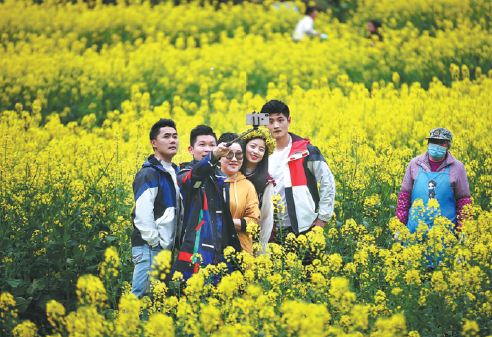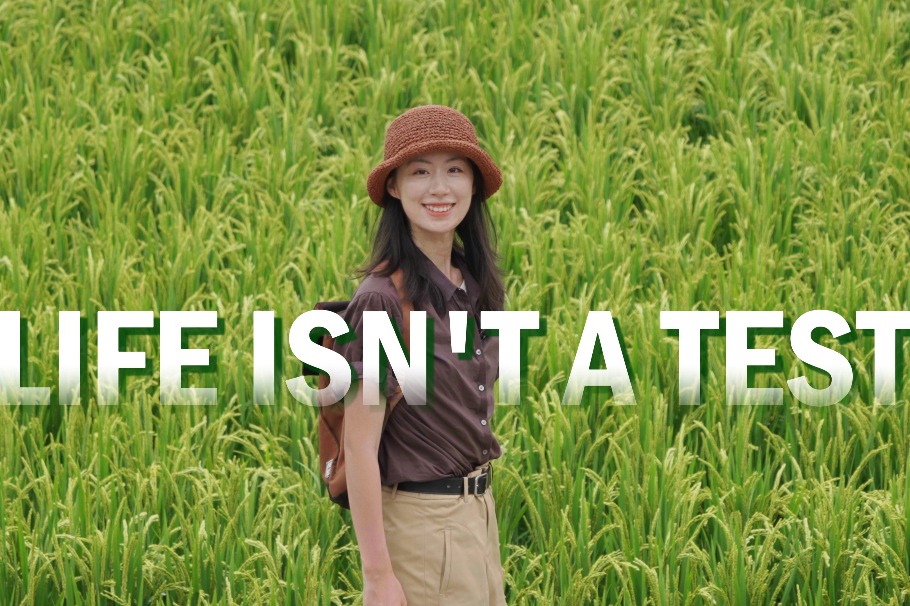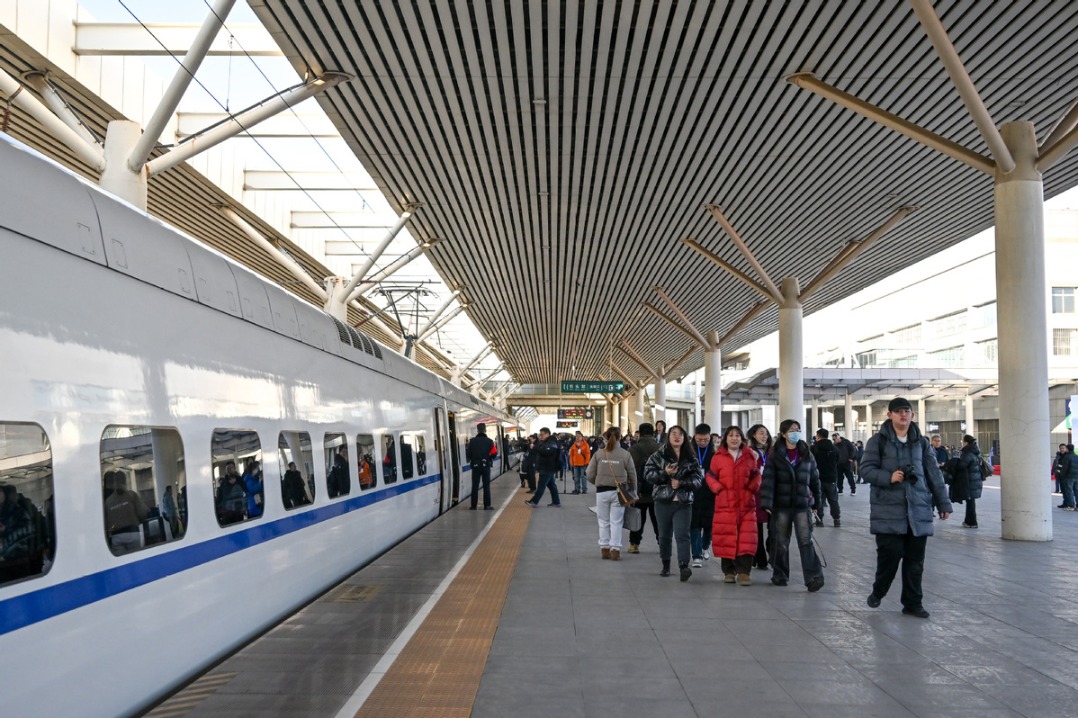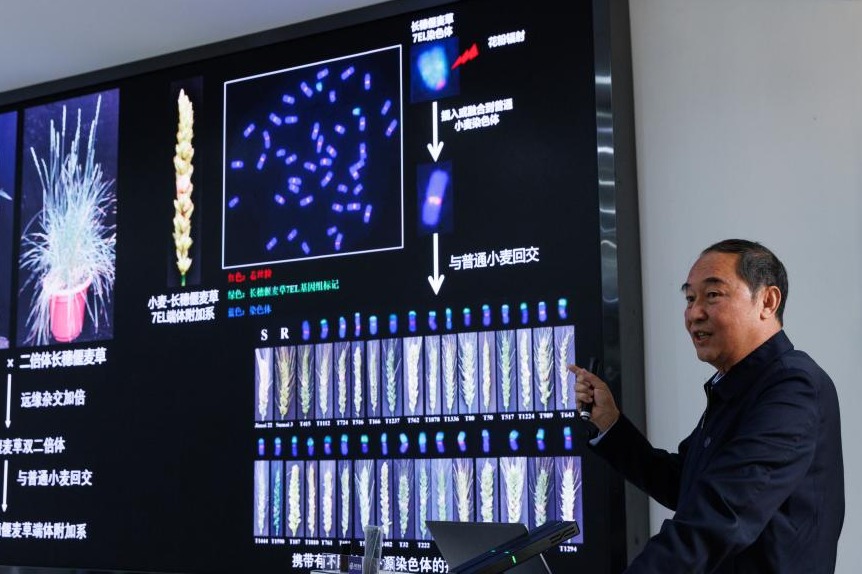Signs of recovery with reopening of key sites
National industry body positive about tourism market's prospects this year

NANCHANG-With spring in the air, China's battered tourism industry is hoping to capitalize as the COVID-19 epidemic recedes in the country. Many scenic spots in low-risk regions have reopened to tourists, bringing hope to the industry.
Cao Aizhen, 49, was relieved to see tourists in his home county in East China's Jiangxi province. Cao lives in Wuyuan, which boasts a picturesque rural landscape. Every year, millions of tourists visit in spring for its stunning "sea of rapeseed flowers".
"Last year, it was a challenge to book a room," said Wu Xiangyang, chairman of a local scenic area. "This year, all of us were hit unprepared by the novel coronavirus."
As the epidemic levels off and tourist sites start to reopen in China, the tourism industry has shown signs of recovery.
"In the past few days, we have seen online bookings rebound with more than 20 rooms booked a day," Wu said.
The domestic travel industry takes a big share of China's economic growth. It contributes 10.94 trillion yuan to the country's GDP and created 28.25 million jobs last year, according to the Ministry of Culture and Tourism. The ministry revealed that more than 10 percent of China's workers or 79.9 million people worked in tourism-related areas last year.
However, the epidemic put a brake on China's booming industry during the peak travel period of the Chinese Spring Festival holiday. The effect rippled across almost all business sectors.
A report published by the China Tourism Academy predicted that the industry might see a 56-percent slump in the number of domestic tourists in the first quarter of this year. The total revenue of the domestic tourism market is expected to be slashed by 20 percent, or 1.18 trillion yuan in 2020.
But now, things are turning around with multiple indexes showing a revival of confidence and willingness to travel.
The latest report by China's largest online travel agency, Trip.com Group, showed that as of mid-March, more than 1,000 tourist sites had reopened to visitors. Of these, more than 100 were 5A attractions, the country's highest rating for scenic spots.
Jiangxi, a province with many tourism resources, has seen all of its 12 attractions with 5A ratings and 94 4A-rated scenic spots opened, according to the local culture and tourism bureau.
Mount Sanqingshan National Park, a UNESCO World Heritage Site, reopened on Feb 22 and received almost 20,000 tourists in 20 days, said Yu Honghu of the park.
"The market fundamentals supporting the operation of the tourism industry have not changed. There is a great possibility that domestic tourism consumption will bottom out and rebound," said Dai Bin, president of the CTA. He added that the academy is optimistic of China's tourism market in 2020.
While the industry gears up for post-epidemic opportunities, there are no signs of reducing prevention measures.
Measures such as the registration of personal information, regular disinfection, body temperature monitoring and a cap on daily visitors are strictly implemented at all tourist sites to lower the risks of infection. Some places are taking things a step further by encouraging a shift in catering etiquette.
Zhang Ning, executive deputy general manager of Huangling village of Wuyuan county, said they have been providing tourists with individually packed food instead of a table of shared dishes.
"Those measures made our trip much safer," said Zhou Zhipeng, who traveled from Shangrao city in the west of Jiangxi.
Xinhua

Today's Top News
- Five continents, five rhythms in 2025
- Lawmakers review draft law to expand childcare services
- China's new-style tea brands find a hot new market in US
- Xi extends congratulations to Chilean president-elect
- Japan urged to stop provocative moves
- Shanxi ends province-wide blanket fireworks ban






























